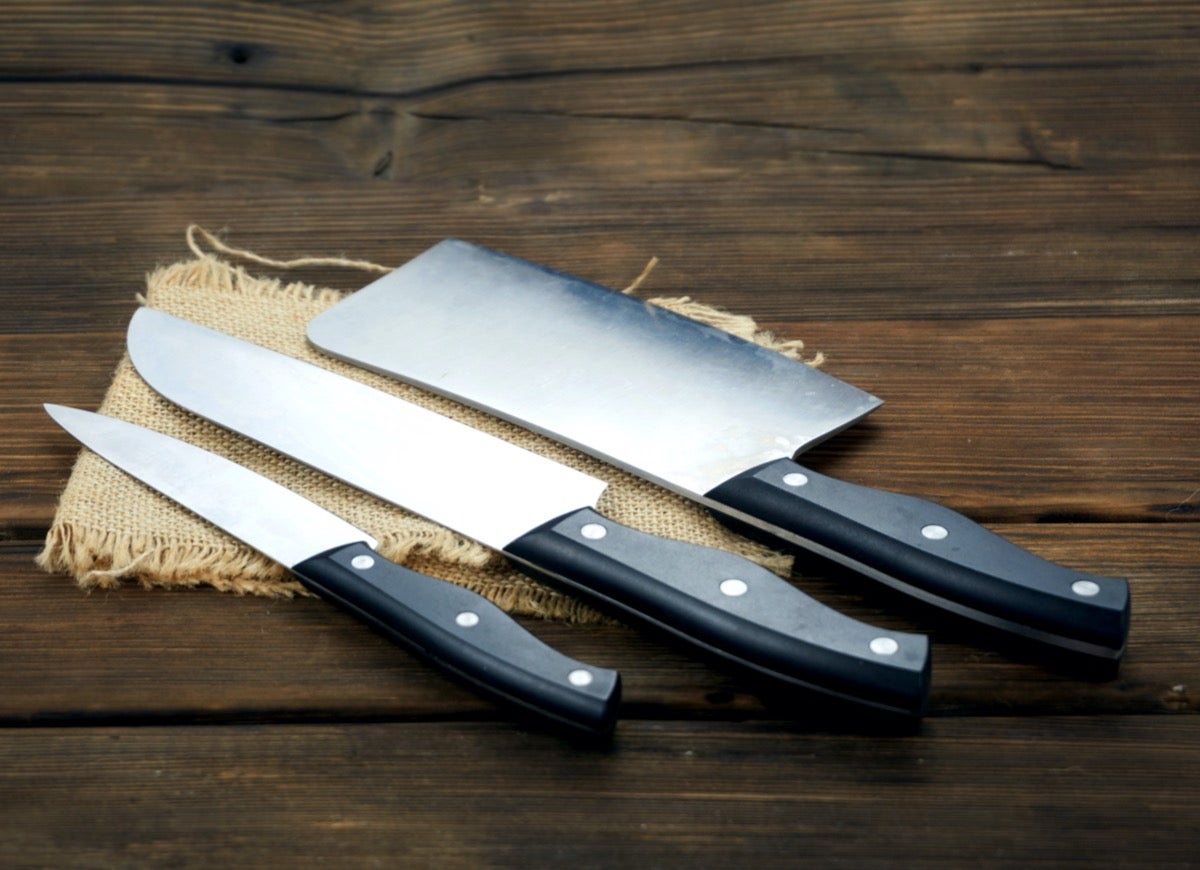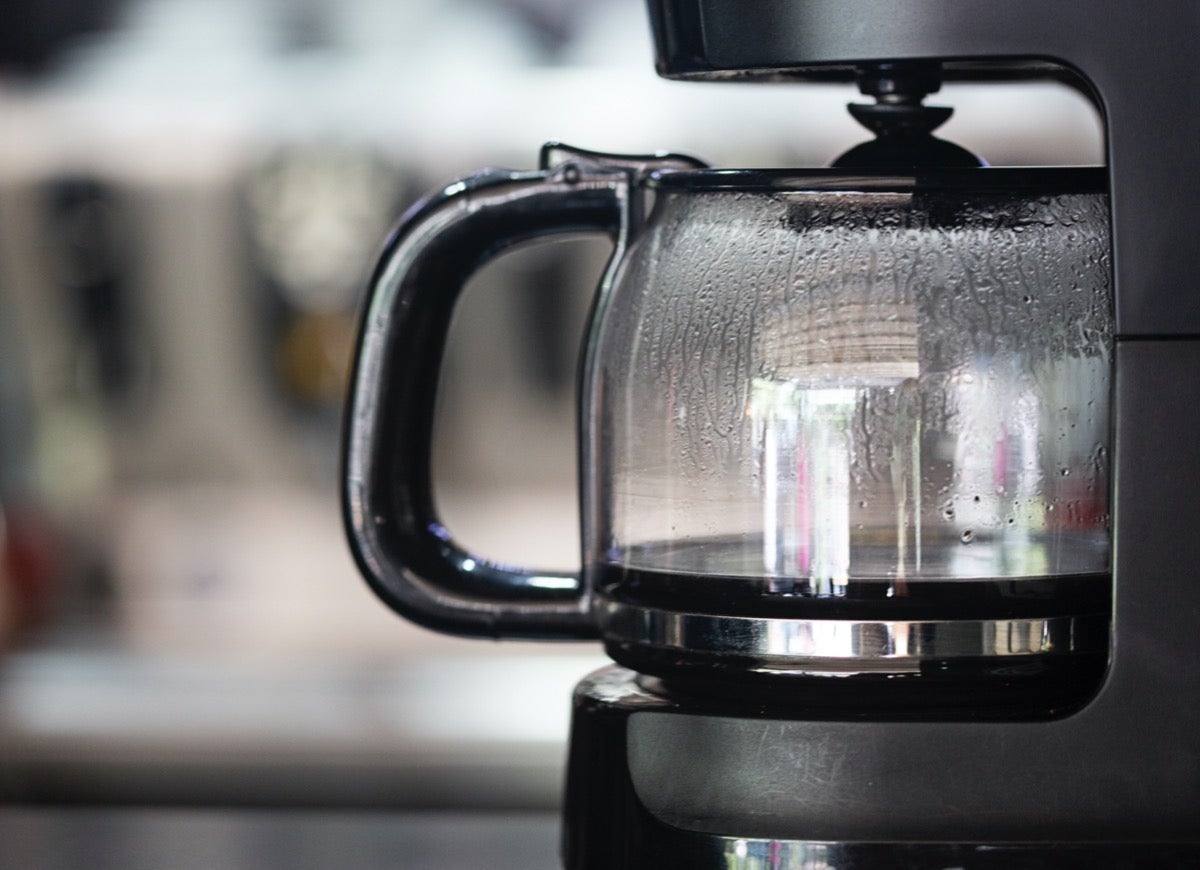We may earn revenue from the products available on this page and participate in affiliate programs. Learn More ›
Make Your Tools Last

When you invest in high-quality kitchen tools, ensuring their longevity is a top priority. By following a few straightforward guidelines, you can keep your cookware in tip-top shape for years to come. Take care of your knives, cutting boards, pots, pans, and utensils with these simple yet effective cleaning and maintenance tricks.
Oil Your Cutting Boards

Keep your wooden cutting boards looking brand new—and prevent warping and cracking—by applying a food-safe oil once a month. While there are products specifically formulated for this task (available on Amazon), a DIY solution made from mineral oil or beeswax also does the trick. Ensure your board is clean and completely dry before applying oil using a clean cloth. Then let your cutting board dry overnight before using it again. This same process can also be used on your wooden cooking utensils to extend their life.
Store Your Knives Upside Down

If you store your knives in a wooden knife block, you may be inadvertently dulling their blades every time you insert or remove them. Your knives can incur damage over time because of the pressure placed on the blade when it slides into or out of its slot. If your knife block allows for it, store your knives upside down so that pressure is put on the spine of the knife when it’s inserted rather than the blade.
Microwave Your Sponges

The sponges you use to clean your kitchen can harbor dangerous bacteria like E. coli that can make you and your family sick. While this may sound scary, this bacteria can be easily eliminated by regularly microwaving your sponges for two minutes. The heat from the microwave will sterilize the sponge and kill any potentially harmful germs.
Re-Season Your Cast Iron

Many home cooks avoid using cast iron cookware because of the seemingly complex care instructions that come along with it. The goal with cast iron is to prevent the pan’s smooth surface layer from being stripped away, which is why you should avoid washing it with soap. Instead, scrub it with coarse salt to remove any food bits from the pan, then use warm water to rinse it clean. Finish it with a coat of vegetable oil to add an additional layer of protection until you use it again.
Wash Your Range Hood Filter

Your range hood provides ventilation to your kitchen by eliminating smoke, grease, and food particles from the air. Most range hoods come with removable, washable filters that should be cleaned regularly to ensure they’re able to perform as intended. Some of these filters are dishwasher-safe while others must be washed by hand so be sure to check the manufacturer’s instructions before cleaning.
Don’t Mix Metal and Non-Stick

Your non-stick pans are essential when it comes to making pancakes or the perfect omelette, but they can be easily scratched by metal cooking utensils. If your pans are coated in polytetrafluoroethylene (better known as Teflon), it’s especially important to avoid chipping away at the chemical coating. Instead of using metal whisks or spatulas when cooking with non-stick cookware, switch to wood or plastic tools to ensure the longevity of your pans.
Sharpen Your Knives

To get the most out of your kitchen knives, optimize their performance with regular sharpening. It’s important to note that sharpening is distinct from honing. Using a honing steel straightens the blades of your knives, but does not actually sharpen them. While sharpening your knives used to require bringing them to a professional, today there are a number of compact home sharpeners available at affordable prices (available on Amazon).
Skip the Dishwasher

While a number of your kitchen tools may be labeled as “dishwasher-safe,” the reality is that many actually fare better when washed by hand. Knives, especially, should always be hand-washed and dried immediately afterwards to preserve their sharp edges. To avoid warping, wooden cutting boards and utensils should similarly never be cleaned in the dishwasher. It’s also best to hand-wash cast iron and enameled cast iron cookware.
Use Baking Soda on Enameled Cast Iron

Sometimes elbow grease isn’t enough to remove stains from your enameled cast iron cookware. Rather than scrubbing and scraping your pots and pans with tools that may cause damage, harness the power of baking soda. Baking soda is non-abrasive, meaning it won’t have an adverse effect on your cookware. To bring a burnt or stained enameled cast iron vessel back to life, fill it with water, bring it to a boil, and then add a couple of tablespoons of baking soda. Let it simmer for a few minutes and then wash your cookware as usual.
Descale Your Coffee Machine

Small kitchen appliances like your coffee pot and kettle require regular descaling to eliminate the buildup of limescale, which is created by the minerals found in tap water. This buildup can affect the taste of your coffee or tea if you don’t periodically descale your machines. For coffee makers, this can be done by filling the pot half-way with plain vinegar, running it several times, and then several more using water to eliminate the vinegar smell.
Related: The Best Kitchen Appliance Brands
Avoid Using Cooking Sprays on Non-Stick Pans

Many home cooks utilize cooking sprays in place of butter or oil to lubricate their non-stick pans and cut down on calories. Many of these sprays, however, contain lecithin— an emulsifier that can cause an unwanted buildup on your pan’s surface. To avoid this textured coating, skip the spray and use a small amount of butter or oil instead.
Read Your Manuals

Kitchen appliances large and small come with manuals detailing the manufacturer’s advice for how best to care for them. Because these recommendations differ depending on the product category and individual item, it’s important to make yourself aware of how your particular implement should be cleaned and maintained to ensure it operates at peak performance.

A DIYer’s Guide to Replacing Flooring
Update the look and feel of any room by replacing old, worn-out flooring. These products and straightforward steps make it easy enough for any handy homeowner to do.

